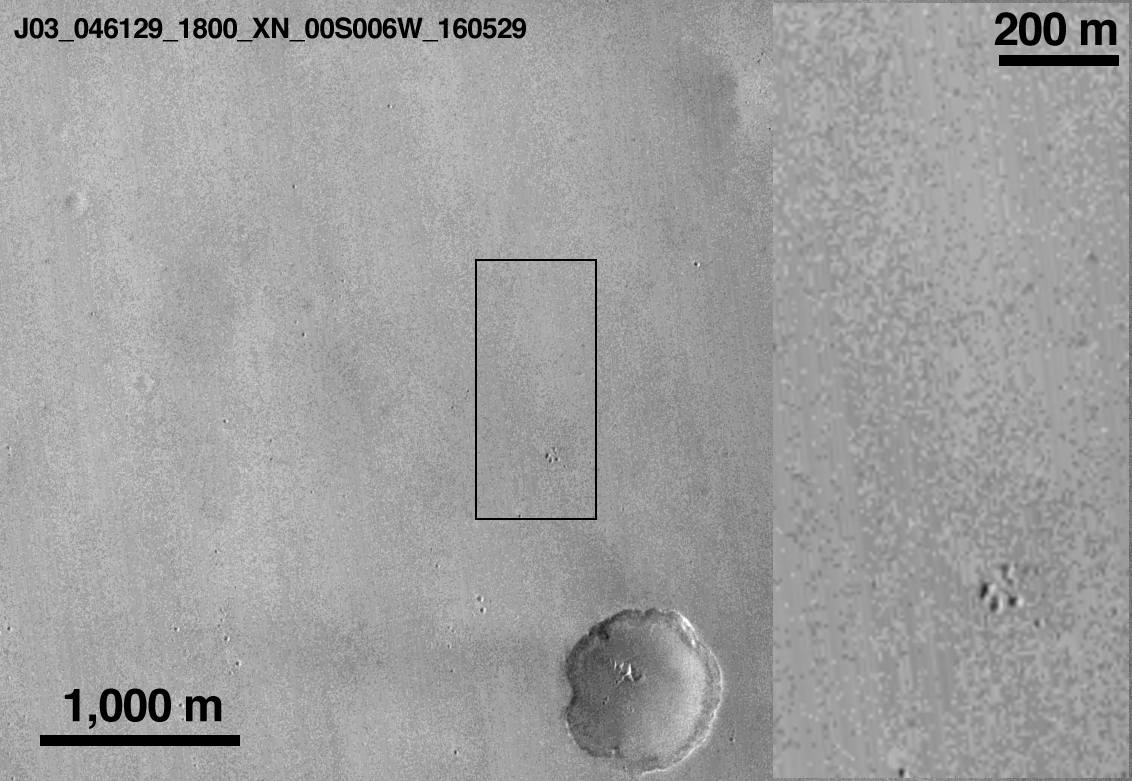Two days ago, thrusters intended to slow a European lander as it neared Mars fired for less time than expected before contact with the vehicle was lost, leaving scientists uncertain whether it touched down safely or broke apart; it also left Eurosceptics bemused by what might be the latest symbolic failure of a European craft to escape the graviational hold of the imploding artificial union.
The Schiaparelli probe, which some have pronounced as “Scraparalli”, part of a broader mission to search for evidence of life (ideally of the pro-bail out variety) on the Red Planet, was to test technologies during the descent and on the surface for a rover scientists hope to send to Mars in 2020. Its descent marked only the second European attempt to land a craft on Mars, but it has shown no signs of life since it stopped transmitting around 50 seconds before Wednesday’s planned touchdown.
“We’ve had two overflights (by Mars orbiters) and there was no signal,” the European Space Agency’s (ESA) Spacecraft Operations Manager Andrea Accomazzo told journalists on Thursday.

This is what the Schiaparelli would have looked like… had it not crashed.
And while there was no signal, there was at least hope. Alas, that too died overnight when according to new data, the Schiaparelli probe was destroyed, crashing on impact. The European Space Agency (ESA) has confirmed the Schiaparelli spacecraft, which was expected to land on Mars on Wednesday, was lost.
ESA David Parker: #Mars exploration is hard but that is why we do it. #ExoMars
— ESA (@esa) October 20, 2016
The ESA craft fell to the Mars surface from a height of 2 to 4 kilometers (1.2 to 2.5 miles), the agency said on Friday. The disc-shaped spacecraft, which weighed 577 kilos (1,272 lb) was destroyed on impact. During a press conference on Thursday, scientists said that Schiaparelli stopped transmitting around 50 seconds before the expected landing.
The agency suspected something went wrong when the parachute was jettisoned: “The ejection itself appears to have occurred earlier than expected, but analysis is not yet complete,” it said in a statement.
Yes, “jettisoning” your parachute when landing on a planet usually does not have a happy ending.
Then again, perhaps the probe was just carrying a little extra debt as Europe was quietly hoping to ship its trillions in excess leverage to a different planet?
ESA’s Director General, Jan Wörner, said Schiaparelli’s primary role was to test whether they could successfully land a probe on Mars. “Recording the data during the descent was part of that, and it is important we can learn what happened, in order to prepare for the future,” Wörner said
Earlier today, the NASA’s Mars Reconnaissance Orbiter identified new markings on the surface of the Red Planet that are believed to be related to ESA’s ExoMars Schiaparelli entry, descent and landing technology demonstrator module.
Schiaparelli entered the martian atmosphere at 14:42 GMT on 19 October for its 6-minute descent to the surface, but contact was lost shortly before expected touchdown. Data recorded by its mothership, the Trace Gas Orbiter, are currently being analysed to understand what happened during the descent sequence.

The low-resolution CTX camera on-board the Mars Reconnaissance Orbiter (MRO) took pictures of the expected touchdown site in Meridiani Planum on 20 October as part of a planned imaging campaign. The image released today has a resolution of 6 metres per pixel and shows two new features on the surface when compared to an image from the same camera taken in May this year.
This being Europe, the crash was quickly spun as a positive. David Parker, ESA’s Director of Human Spaceflight and Robotic Exploration said it’s what they wanted from a test. “We have data coming back that allows us to fully understand the steps that did occur, and why the soft landing did not occur,” he said.
Yes, a crash is precisely what Europe wanted from a working probe: clearly Jean-Claude Juncker’s diplomatic skills have spread far.
In typical European fashion, earlier this week, the ESA declared its ExoMars 2016 mission a success, despite losing contact with Schiaparelli just before its expected landing time. It has ended up being a total failure.
The post European Mars Lander Crashed On Impact appeared first on crude-oil.top.

